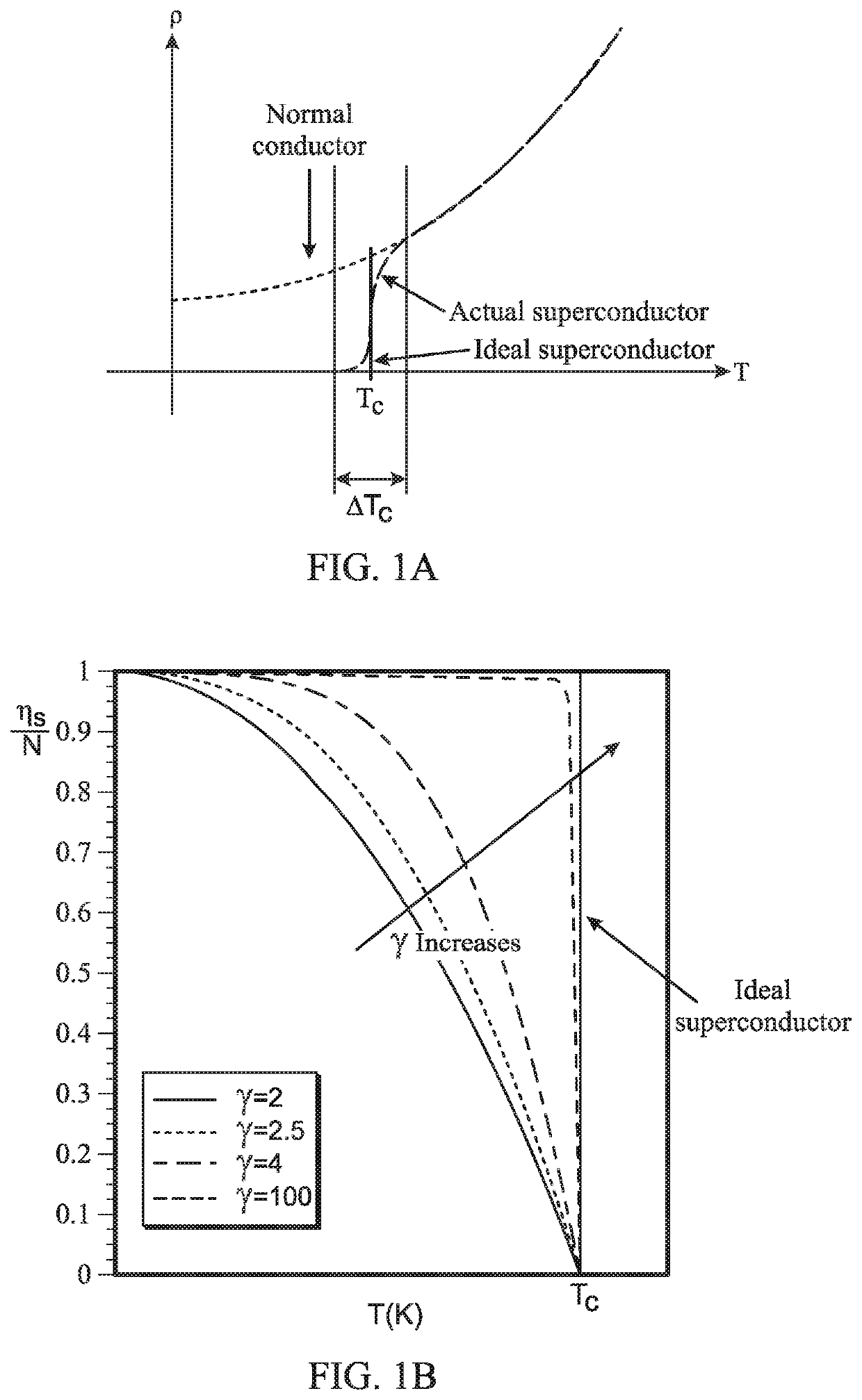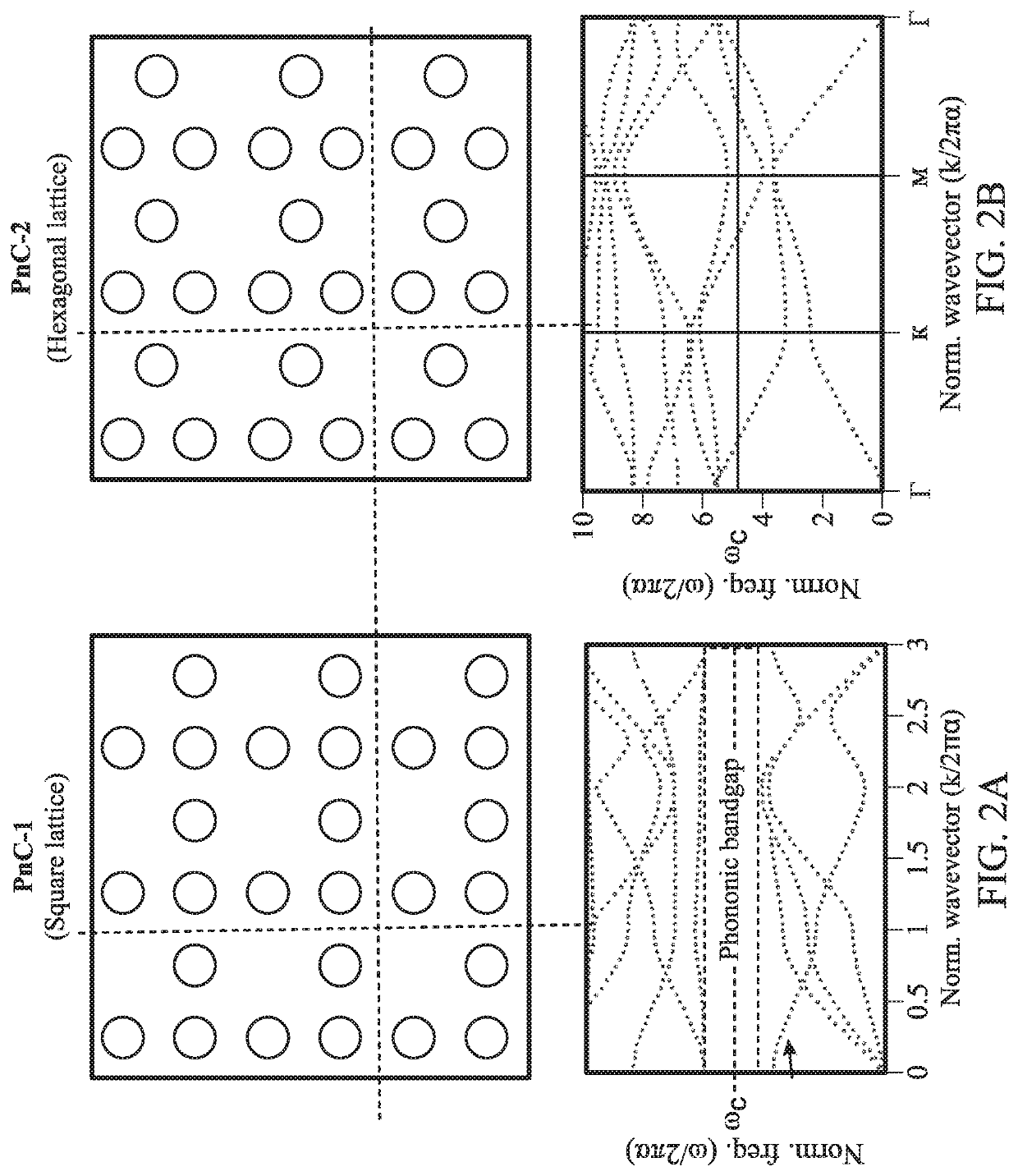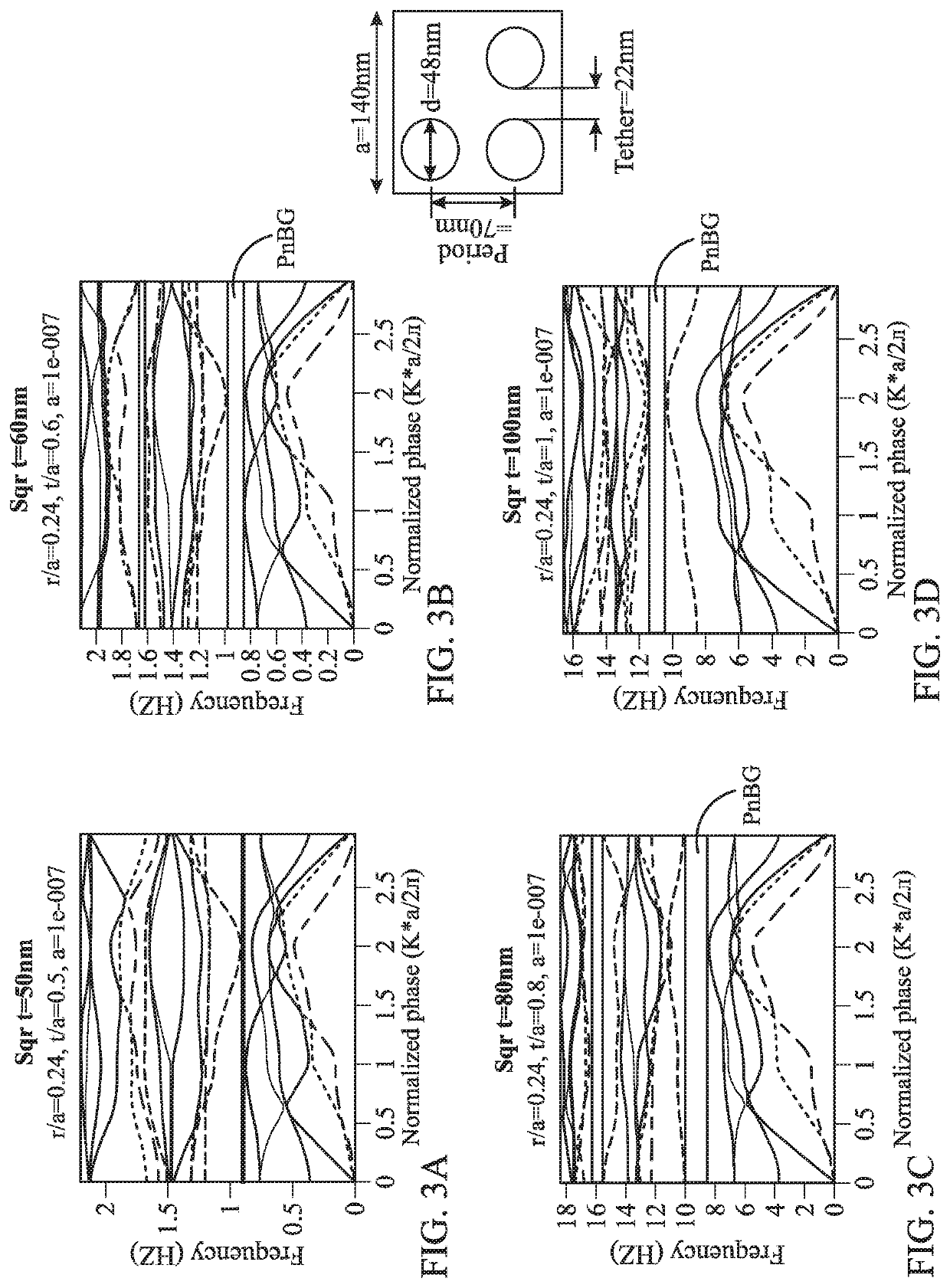Superconductivity device comprising a phononic crystal
a phononic crystal and superconductivity technology, applied in the field of superconductivity, can solve the problems of increasing the overhead in cost and time, the decoherence and loss of co-pair superconductivity, and the increase of resistive losses, so as to suppress the normal conduction
- Summary
- Abstract
- Description
- Claims
- Application Information
AI Technical Summary
Benefits of technology
Problems solved by technology
Method used
Image
Examples
Embodiment Construction
[0014]According to the present invention, the distribution of superconducting Cooper-pairs and unpaired normal-conducting electrons can be modified by selectively engineering which phonons can propagate in the superconductor. Changing the thermal background seen by the electrons can result in fewer quasi-particle excitations (i.e., normal electrons). Fundamentally, this phonon engineering route requires suppression of the phonon heat capacity of the superconductor near Tc. In particular, a phononic crystal (PnC) can be used to engineer a phononic frequency gap that suppresses the decohering thermal phonon population just below the Cooper-frequency (fc), and thus the normal conduction electron population. PnCs comprise periodic arrangements of phonon scattering centers embedded in a homogeneous background matrix with lattice spacing comparable to the acoustic wavelength. The scattering material has a density and / or elastic constant that is different than the matrix material. When pro...
PUM
| Property | Measurement | Unit |
|---|---|---|
| unit cell size | aaaaa | aaaaa |
| thicknesses | aaaaa | aaaaa |
| diameter | aaaaa | aaaaa |
Abstract
Description
Claims
Application Information
 Login to View More
Login to View More - R&D
- Intellectual Property
- Life Sciences
- Materials
- Tech Scout
- Unparalleled Data Quality
- Higher Quality Content
- 60% Fewer Hallucinations
Browse by: Latest US Patents, China's latest patents, Technical Efficacy Thesaurus, Application Domain, Technology Topic, Popular Technical Reports.
© 2025 PatSnap. All rights reserved.Legal|Privacy policy|Modern Slavery Act Transparency Statement|Sitemap|About US| Contact US: help@patsnap.com



